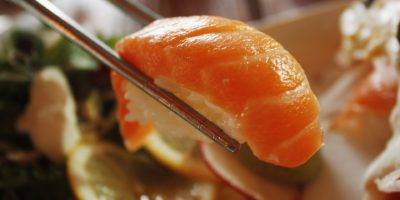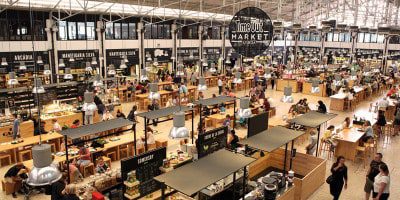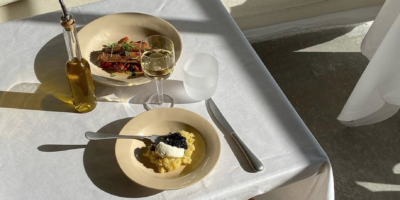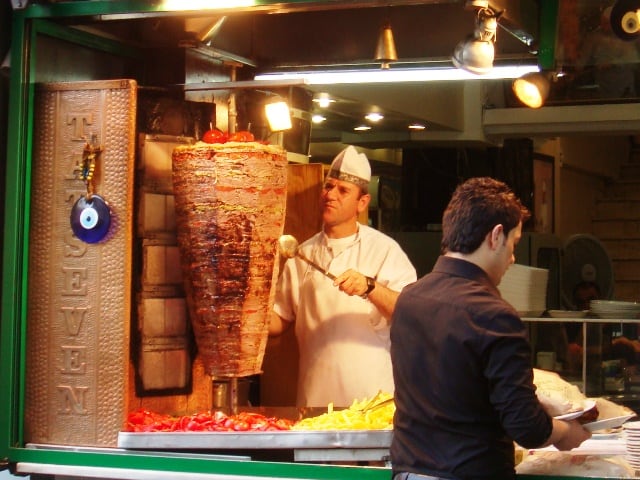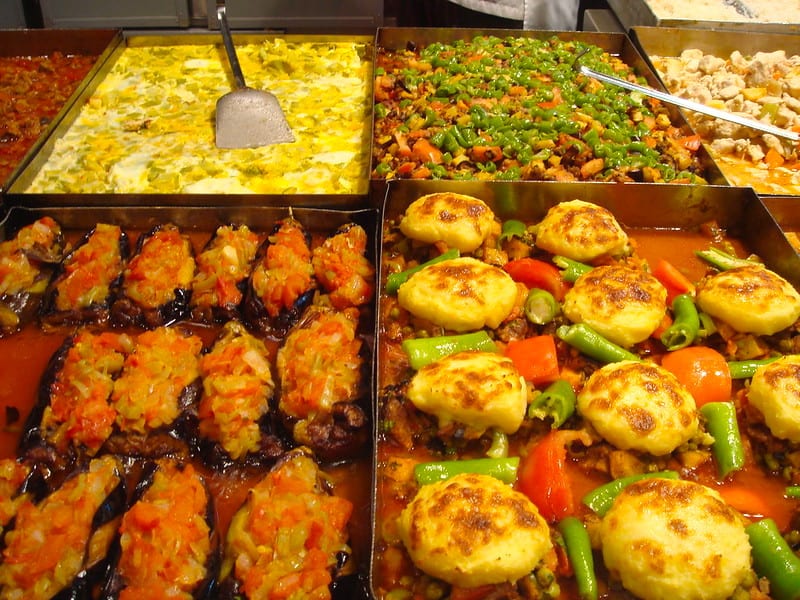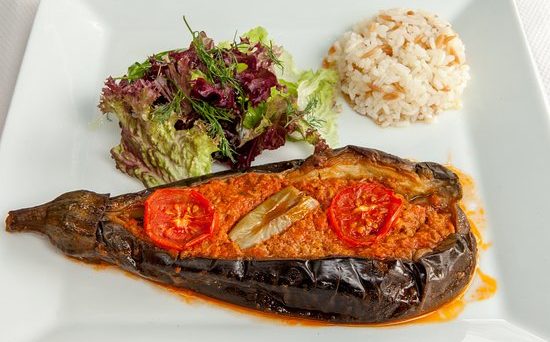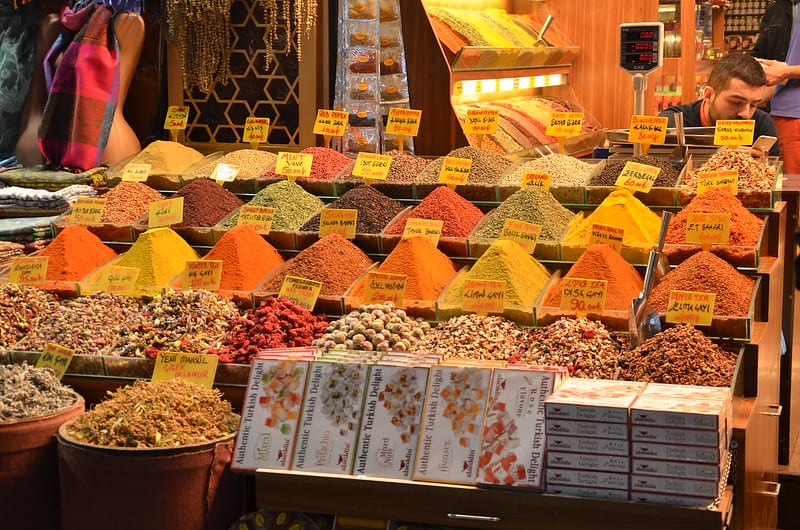A Brief History of Turkish Cuisine
Turkish culinary history and culture is an ancient one, beginning in Central Asia all the way to the present. Today, restaurants opened by Turks and Turkish chefs have proven very popular around the world. Places such as Oklava in Shoreditch, London and the extremely popular Turkish chef/butcher turned restaurateur Nusret aka “Salt Bae” have put Turkish cuisine on the world map. Moreover, Istanbul based restaurants such as Nicole have captured places in world’s best restaurant lists of late. As such, the popularity of pides, döners and kebabs worldwide only highlights that today they’re becoming household names and deservedly so. With the Turkish diaspora spread all over the world, it’s only natural that they’re bringing their food culture with them and in turn, making a big impact on world food culture.
During the height of the Ottoman Empire, the cuisine that was developed was a result of the palace kitchens, such as at Topkapı Palace. Check out our ultimate guide to the huge Palace here. Together with the street food and regional foods, Turkish cuisine can hold its own alongside other popular cuisines such as French, Italian and Chinese.
Ethnic & Regional Influences
With the presence of ethnic groups other than Turks in Anatolia, a mix of different cultures developed in Turkey, especially in the cities inhabited by foreigners and other ethnicities. These groups, such Levantines in Izmir, the Greek and Armenians in Istanbul and Kurds in the Southeast, the development of modern Turkish cuisine still needs some study and research.
Regional differences and geography also play a big role in the country’s cuisine. It influences the availability of ingredients and the vagaries of food, sometimes even in the same dish cooked around the country. As such, food culture differs from region to region in surprising ways. These are: Eastern Anatolia, the Southeast and the Black Sea region. The regions influenced by the sea include the Marmara, the Aegean, and the Mediterranean.
All of these regions can boast to have their own particular food culture. Of course, in recent years, globalization and the commercialization of food has influenced food culture and consumption. TV shows such as Masterchef in Turkey and the rise of foreign influencers from other parts of the world has expanded the range of food available. For example, the popularity of tacos, sushi, noodles and bubble tea is catching on with the young.
Furthermore, the cuisine’s popularity is transforming the tourism sector. It is giving rise to gastronomic tourism and international interest from world famous chefs. For example, Gaziantep has earned the title of the Gastronomy city of Turkey. This is due to the city’s unique mix of cuisines from the Mediterranean, the Middle East and Anatolia tastes. Every year, it hosts an International gastronomy festival!
Ingredients
Turkish cuisine has a huge variety of ingredients, food making techniques and core ingredients. These comprise the use of wheat in all its varieties: ground in the form of flour, for instance. As such, bread tops the list, along with wheat-based pastries such as börek and of course, rice. For more information on this delicious pastry and much more, check out our articles on the Top 10 Turkish Food You Should Try and Turkish breakfast.
Kebabs and meat also feature prominently, and in a stew form called Yahni. Onions and tomatoes are the base used in almost every dish. Tomatoes are pureed into a paste or used in concentrated form. They are then cooked with ground beef and cooked in oil. Extra virgin olive oil and vegetable oil such as safflower are used. The production of the former is a big industry in the country. Dishes made with olive oil are popular all over the country and called Zeytinyağlılar.
On the other hand, vegetables are consumed raw in the form of salads. Vegetables such as broccoli, cauliflower and celeriac root, for instance, are also slightly steamed or boiled. They are then served as a cold salad with a vinaigrette of lemon juice and olive oil.
Historical Development
Given the vast areas and geographies inhabited by ancient Turks and their nomadic lifestyles, there is obviously a richness and variety of food. The Turks that lived in Central Asia were nomads and practiced animal husbandry. They mainly consumed meat, animal products and fermented foods. Foods such as sheep meat and horse meat and yoğurt feature prominently. An ancient food, yogurt was used the nomadic Turks in their travels around the continent. Its consumption was recorded in historical books such as the Divan Lughat al-Turk by Mahmud Kashgari, a 11th century scholar and lexicographer of the Turkish languages. Furthermore, food features in Mevlana Rumi’s Sufism and his work, Masnavi. Infact, information table etiquette around meals is mentioned in the work.
When migration led them to Anatolia, the Turks first founded the Seljuk Kingdom in Central Anatolia with Konya as their capital city. With a new geography came new ingredients and preparation techniques, and they incorporated those into the existing cuisine. For instance, rice was brought over by the Seljuks during this time period from the Safavids in Iran. Sheep meat and organs were a dominant ingredient in the Seljuk kitchen. Plants and fruits such as beans, hazelnuts and raisins were incorporated and are mentioned in the Mevlana’s work. We find foods such as flatbreads, bread with meat, pastries, yogurt soup, pickles, jams and others that incorporate both the nomadic cuisine together with the one that started developing in the capital. Today, Konya has a long list of popular regional foods.
Ottoman Era
After the fall of Seljuks, the Ottomans took over. It is believed that Turkish cuisine as we know today formed mainly in the Ottoman palace kitchens in Istanbul. Istanbul became a melting pot for the cuisine as it soon became the empire’s capital after Bursa and Edirne. With the abundance of fish from the newly acquired coastal areas, spices from the east because of the Silk Road and the fertile Anatolian soil made new ingredients part of the staple diet. For instance, the use of wheat, milk, yogurt and thin bread called yufka became more common. In addition, the use of a stone clay oven called tandir in Turkish was introduced. As such, the Ottoman kitchen’s legacy can be seen today in the food available in every home, restaurant and streets of the country!
Specialized food preparation and the development of food markets especially the still functioning Egyptian Spice Bazaar played important roles in providing fresh and never before seen tastes.
In the Topkapı Palace, the palace kitchen was a huge area. around 1200 or more cooks alone were employed in the palace kitchens and it fed thousands of people everyday. Unique ingredients that came in from all over the empire made it possible to develop new recipes and tastes. Soon after conquering Istanbul, Fatih Mehmet’s influence saw the use of fish and seafood in the kitchen for the first time.
The palace kitchen played an important role in feeding thousands of people everyday and creating many Ottoman dishes and desserts, including, legend has it, the legendary dish Baklava. For more on Turkish desserts, check out the articles on the Top 10 desserts from Turkey.
Some of the many dishes from the Ottoman kitchen have survived today and have carried on with names such as Hunkar Beğendi (“Sultan’s Delight” or literally, “the Sultan Liked it”). It is a wonderful lamb stew served on a bed of pureed and spiced eggplant and it’s absolutely delicious!
With the help of a tray, a dining area would be created, with a cloth spread first and a tray table placed on it. Then, people would gather around the ‘sini’, and sit on the floor with cushions to eat their food. The tray would allow people to share the food and a spoon would be utilized or hands were also used. A very early breakfast and dinner before sunset were the only two meals eaten.
The organization of the kitchen was an important part of the palace and its food production. Hierarchical ranks were given and respected by everyone and the cuisine played an important role in highlighting the empire’s prosperity and wealth. The way it did it was it was used for state functions and dinners with foreign dignitaries, allies and even ambassadors from enemy nations.
When one visit Topkapı Palace, the space and buildings occupied by the kitchens showcase how important it was. More than 1300 cooks and staff produced a wide variety of foods such as soups, rice, kebabs, breads, pastries and desserts. They did this to feed thousands of people each day and perfected their culinary art. The influence of their skills and dedication can be seen as far away in Russia, North Africa and the Balkans. Additionally, the Spice Road made sure new and interesting ingredients were kept in supply so this traditional continued until the Empire faced a decline.
As with any empire, it’s fall and loss of power meant that the Sultan and its administration needed to improve foreign relations. One way the Ottoman Empire did this was through the adoption of Western dress and lifestyles. As such, food choices and eating habits also saw a change. Western/modern ways of eating meant the use of tables and chairs and forks and knives. In addition, foreign tastes in the form of French cuisine made its way onto the tables along with traditional Ottoman fare.
Modern Era
In the year 1923, when Republic of Turkey was established, the Turkish cuisine was a division of sorts, with classic cuisine and regional ones. The classic one draws heavily or reflects the cuisine of the Ottoman Palace. The Ottoman era established the modern Turkish palate and cuisine found in households and restaurants in the modern and regional cities of the country. Of course, street food also dominates the tourism industry and you can find good quality restaurants and cafes serving excellent fare in modern cities. Check out our article on the Turkish cuisine and what to eat when you visit Istanbul: Turkish Cuisine: Top 10 Turkish Food You Should Try.
The modern Turkish cuisine can be organized in several categories. These are meats, grains, vegetables, seafood, dessert and beverages. A long list of ingredients, flavours and cooking methods allows Turkish modern cuisine to have endless combination of flavours. In turn, it incorporates the history, culture and regional influences to form mouth watering dishes across the country.
Today, Ottoman cuisine can be tasted in restaurants such as Deraliye Restaurant, very close to Topkapı Palace Museum and at Tuğra Restaurant in the prestigious Çırağan Palace, which is now a Kempinski hotel in Beşiktaş.
In contrast, a new approach to the Turkish cuisine is known as the “New Anatolian Kitchen” in response to the increase of ‘European’ ingredients, techniques and dishes. It focuses on Turkey, Istanbul in particular but also covers other countries the region too.
The approach as Chef Mehmet Gürs puts it is: “A new perspective is needed to allow the rich food cultures from the past to survive and evolve. The New Anatolian Kitchen has no boundaries; it is a way of perceiving food, it is a philosophy that can and should be interpreted in many ways.” As Head Chef of Mikla, included in the world’s 50 best restaurants, Gürs’ approach embraces cultural differences and aims to preserve the traditional ways of cooking in Anatolia and offer a harmonious blend of the Occident and the Orient. His restaurant has an extensive team of chefs, researchers and a deep network in the country, the kitchen utilizes unique regional ingredients. Learn more here at the list of Istanbul’s Top 10 Rooftop Restaurants.
The landmass of Anatolia is rich in history and diverse in geography and it produces a long list of ingredients, ripe for developing new tastes while preserving the past. The Anatolian kitchen’s approach utilizes this to offers diversity of dishes with an unparalleled view of the Golden Horn. You can find delectable prawns with beans hummus and wild cabbage, soap wort root, lamb’s heart with pomegranate vinegar and pungent sumac on the menu at this world class restaurant. Other dishes such as ripe quince with clotted cream (also called Kaymak) in the form of ice cream to finish your night out!
Planning a trip to Paris ? Get ready !
These are Amazon’s best-selling travel products that you may need for coming to Paris.
Bookstore
- The best travel book : Rick Steves – Paris 2023 – Learn more here
- Fodor’s Paris 2024 – Learn more here
Travel Gear
- Venture Pal Lightweight Backpack – Learn more here
- Samsonite Winfield 2 28″ Luggage – Learn more here
- Swig Savvy’s Stainless Steel Insulated Water Bottle – Learn more here
Check Amazon’s best-seller list for the most popular travel accessories. We sometimes read this list just to find out what new travel products people are buying.


